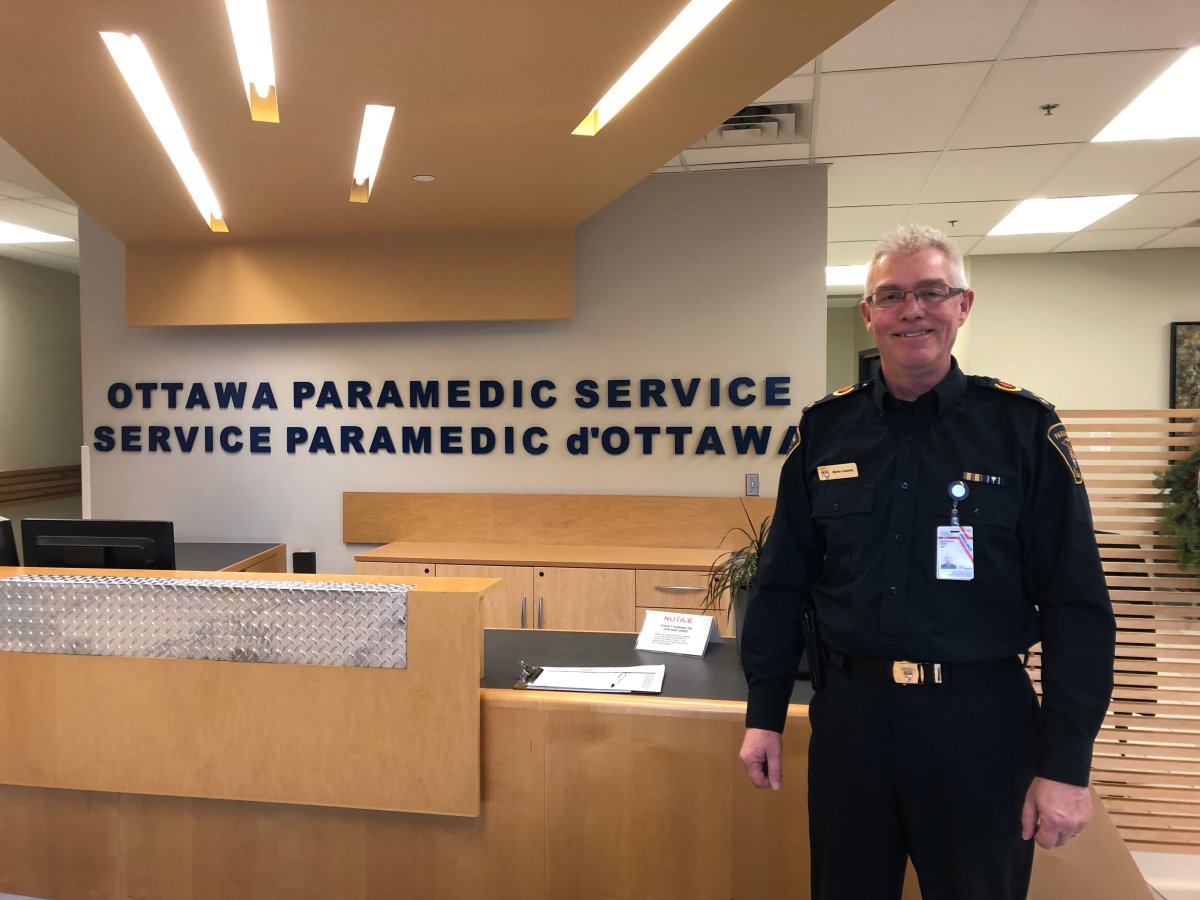In an effort to bolster local paramedics’ mental wellness, the Ottawa Paramedic Service spent 2018 providing standardized mental health training to all its frontline staff and also doubled the size of its internal peer support team, the agency’s chief says.

“I think paramedics have a unique experience in their work life that we manage and we try to provide the necessary supports for everyone and those supports are changing all the time, we’re adding to them all the time,” Ottawa Paramedics Chief Myles Cassidy said in a year-end interview with Global News on Dec. 19.
“The mental health piece is a big concern to us.”
More and more research studies are shining new light on mental health concerns and illnesses among first responders, including police, firefighters, paramedics, dispatchers and correctional workers, who regularly deal with serious injuries, death and other traumatic situations in the course of their daily work.
In 2017, a national study published in the Canadian Journal of Psychiatry surveyed 5,813 first responders and found that 44.5 per cent of participants screen positively for “symptom clusters consistent with one or more mental disorders,” such as depression and post-traumatic stress disorder. This appeared to be a frequency about four times higher than the general population, the report concluded.
Cassidy said he thinks “greater discussion” around first responders and mental health has spurred “all levels of governments” to pay more attention to the issue and help local emergency services prioritize their employees’ well being.
.jpg?w=1040&quality=70&strip=all)
Throughout this past year in Ottawa, all paramedic supervisors and frontline staff were enrolled in a mental health training program designed and taught by the federal Department of National Defence, Cassidy said.

Get breaking National news
The goal of the program, called the Road to Mental Readiness, is to improve both participants’ performance in the short term and their “mental health outcomes” in the long run. Frontline staff received four hours of training each and supervisors received six, Cassidy said.
The training for frontline staff will be completed by early January and the service’s dispatchers are next in line to receive the same training early next year, according to paramedic spokesperson Marc-Antoine Deschamps.
In all, approximately 600 staff will be trained through the program.
The paramedic service in 2018 also increased its peer support network from 25 to 50 members, Deschamps said.
“That includes people from paramedics, communications officers, logistics staffs… so everybody has somebody to talk to,” he said.
Meeting call volume, response times remain challenges
For nearly two decades, the paramedic service has been experiencing a steady increase in the volume of calls it receives every year due to a number of factors, including an aging population, Cassidy said. But the agency’s resources haven’t increased at the same rate.
This strain, in part, has affected the service’s response times for life-threatening emergencies, which failed to meet city-mandated standards in 2015 and 2016. (Those response times then improved in 2017.)
“Since amalgamation, the demand for the Paramedic Service has increased year-over-year and has recently begun to outpace current staffing levels and vehicle availability,” the service’s 2017 annual report noted.
Cassidy said several dozen full-time hires over the past three years have helped address this resource shortage, but the service still needs a larger workforce to meet demand. He said he expects staffing levels to increase over the next council term after Ottawa Mayor Jim Watson promised to hire an additional 56 paramedics over the next four years.
Another factor contributing to the problem is the amount of time paramedics spend waiting to offload their patients in hospital emergency rooms. In 2017, it was a total of 37,423 hours, according to that year’s annual report. The chief paramedic said he’s been working with local hospitals this year to reduce that number, so more paramedics become free to respond to new calls faster.
On top of that, officials are regularly reviewing how the agency deploys its resources and have revamped the scheduling system for staff.
“All of those things put together, each one takes a little nibble at performance and we try to pay attention to all of those,” Cassidy said.
But at the end of the day, Cassidy argues that response time is “only a very small measure of success of paramedic service.”
Tornadoes ‘significant incident’ of 2018
Cassidy identified the two tornadoes that hit the Ottawa area on Sept. 21 as the most “significant incident” of the year that required a greater response from the paramedic service.
The two powerful twisters ripped through the west Ottawa community of Dunrobin and the Nepean neighbourhoods of Arlington Woods and Craig Henry, triggering 45 emergency calls in their immediate aftermath, Cassidy said.

The chief said paramedics responded rapidly with a “sharp ramp up” in resources, sending as many vehicles as were available to the scene, before giving many the green light to clear out.
“The thing about these events that really strikes me every time they happen is that … even though all that was going on, people were still having their heart attacks and their asthma attacks and they were falling down and hurting themselves and crashing their cars,” Cassidy said. “All the normal business keeps going on even though that tornado rolled through the area.
“So it really is an additional resource drain. We can’t stop doing all those other calls to go and do that call.”
Paramedics assessed 30 patients that Friday evening, and 10 were taken to hospital, he said.








Comments